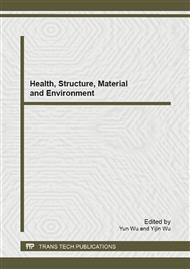p.511
p.515
p.522
p.528
p.532
p.537
p.545
p.552
p.560
Pressure Characteristics of the Air Flow Field of Cyclone
Abstract:
The changes in pressure inside the cyclone is a key factor affecting the amount of dust. CFD packages used in this study, with powerful computing features, it's built-in the dynamic fluid dynamics equations, have to know how to self do rational, logical judgments engineering objects. After the attempt of the flow rate and pressure, the experimental simulation results showed: (1) in a fixed wind speed, the vortex rotation was more smoothly, the less amount of fallout; (2) in a fixed wind speed rotating vortex was less smooth, more fallout . (3) the greater the internal pressure, dust kept in the more the amount of air, the less the amount of dust; (4) the internal pressure of the smaller, less dust kept in the air quantity, more fallout. In short, the size of the internal velocity and pressure of the dust collector, was sufficient to affect the important factors of the drop amount of the quantity of dust, and thus determine a dust collector dust of the performance being good or bad.
Info:
Periodical:
Pages:
532-536
Citation:
Online since:
February 2013
Authors:
Price:
Сopyright:
© 2013 Trans Tech Publications Ltd. All Rights Reserved
Share:
Citation:


